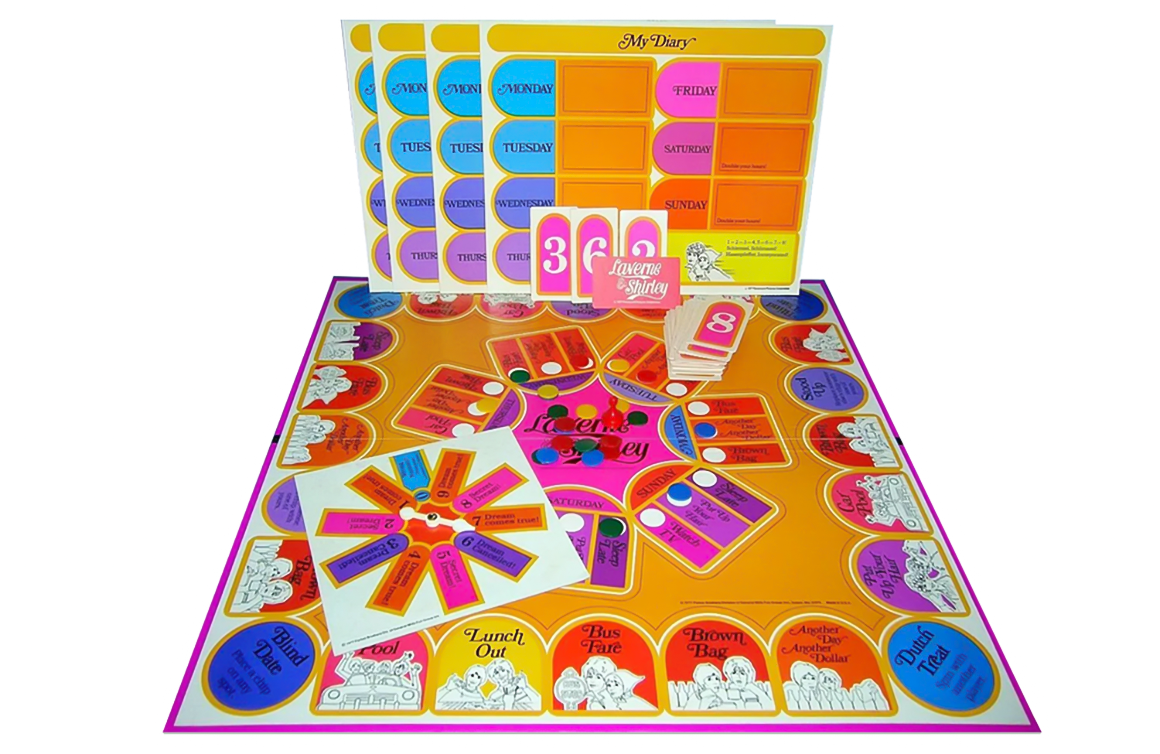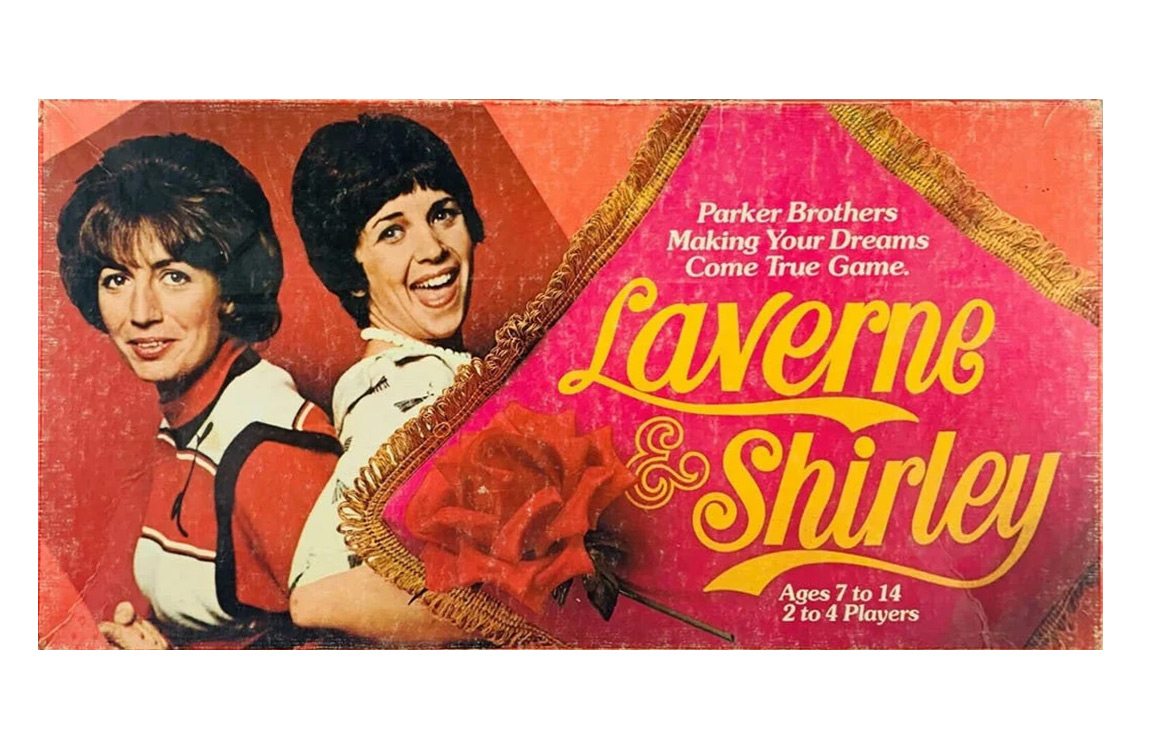“Do you have a secret dream?”
Released in 1977 by Parker Brothers, the Laverne & Shirley board game was a race to accumulate the most dating hours in a single week.
The game was an officially licensed product based on the popular sitcom of the same name. The TV series was a spin-off of Happy Days and enjoyed an 8-season run from 1976 to 1983.
GAMEPLAY
The game design and colours reflected the era in which the sitcom was set, the late 1950s and ’60s. Stops along the board were labelled with activities related to the lives of the characters, such as Bus Fare, Sleep Late, Stood Up, Car Pool, Brown Bag, Lunch Out, Watch T.V., Put Up Your Hair, Another Day Another Dollar, Blind Date, and Dutch Treat.
A single pawn was used by all players and a spinner prompted the actions. The centre of the board was illustrated with the 7 days of the week. Each day included 3 stops along the game board (not all days included the same stops). As players landed on the stops, they placed a token at the centre of the board beside the corresponding activity. The goal was for a player to occupy 2 of the 3 stops on the same day of the week. Not all stops were created equally — some offered opportunities and others setbacks.
The spinner played a dual role in the game. It was illustrated with numbers 0 to 9, indicating how many spaces a player could move along the board during their turn. Once a player had gathered 2 chips on a single day on the board, they could then begin to play for dream cards, which they placed on their diary card. The goal was to gather up to 7 dream cards (1 for each day of the week). Each dream card included a number — 2 through 8 — that represented dating hours.
Dream cards were earned through spins. The 4 categories included Dream Comes True!, Secret Dreams!, Dream Cancelled!, and Wrong Number! (Visit from Laverne’s Father). Players took cards and placed them face-down on their diary cards without looking at the numbers. The Saturday and Sunday places on the dream card doubled the hours on the card.
A game could conclude in a couple of different ways. A player could complete their 7-day diary card, prompting all players to turn their dream cards over and count the hours they spent on dates that week. If a player’s spin settled on Wrong Number! (Visit from Laverne’s Father), the game ended and players added up the numbers on the cards to see who had the most dating hours to win the game.
IN THE BOX
The box cover featured an image of the sitcom’s lead characters, Laverne DeFazio and Shirley Feeney. A complete game included a game board, spinner, 20 coloured chips (red, yellow, green, and blue), 1 player pawn, 4 diary cards, and 28 dream cards. Instructions were included as a box insert.
Note: If you buy something using the eBay link in this story, we may earn a small commission. Thank you for supporting independent toy journalism!


